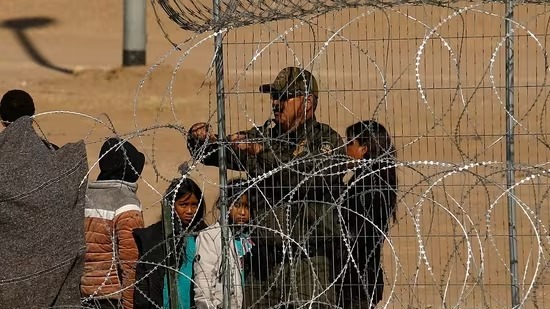Razor wire placed along the border with Mexico may be cut by authorities, according to the US Supreme Court
The US Supreme Court has allowed Border Patrol officers to temporarily continue dismantling razor wire that Texas placed along a crucial portion of the US-Mexico border, in a split ruling. The removal of concertina wire along the Rio Grande’s banks, which is meant to discourage illegal migrants from entering the US, is approved by a 5-4 vote. Texas’s vigorous efforts to strengthen border security, including the installation of razor wire, are at the center of a legal dispute that the Biden administration is now engaged in with the state.

The decision makes it possible for Border Patrol officers to deal with the sharp wire, which has injured a few migrants. According to the Justice Department, the barrier makes it more difficult for the government to efficiently monitor the border and help needy people. As the dispute drags on, the Biden administration has won since the Supreme Court’s one-page ruling lacked any justification.
Razor wire had been approved by Texas Governor Greg Abbott as part of a larger plan to stop unauthorized crossings from Mexico. According to Abbott’s spokesman Andrew Mahaleris, the lack of barriers like razor wire would encourage migrants to make risky crossings, making it harder for Texas border officials to do their jobs.
The White House praised the Supreme Court’s ruling while denouncing Texas for what it considers to be political posturing. The legal dispute is still pending. About thirty miles of concertina wire intersect close to Eagle Pass, a popular location for unauthorized crossings. Eagle Park is now under the administration of the Texas Military Department, which has limited access for Border Patrol personnel.
Abbott has put in place a number of policies, such as permitting trespassing arrests and floating barriers in the Rio Grande, all of which the Biden administration is suing to overturn. The government claimed in court that the wire interferes with Border Patrol operations and that Texas’ border control measures are subordinate to federal immigration law.
Chief Justice John Roberts, along with Justices Amy Coney Barrett, Ketanji Brown Jackson, Elena Kagan, and Sonia Sotomayor, sided with the government in the Supreme Court’s ruling. Conversely, Texas was supported by Justices Samuel Alito, Neil Gorsuch, Brett Kavanaugh, and Clarence Thomas. As both parties negotiate the difficulties of immigration enforcement along the border between the United States and Mexico, the legal argument rages on.







